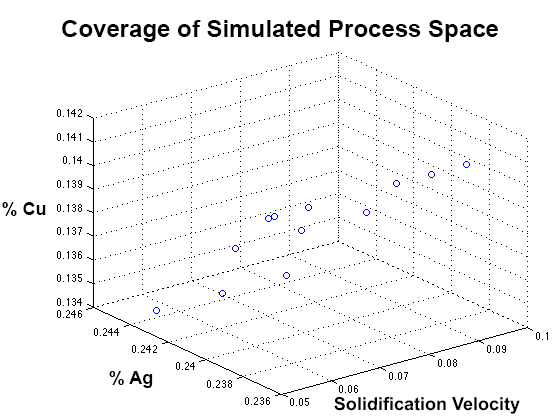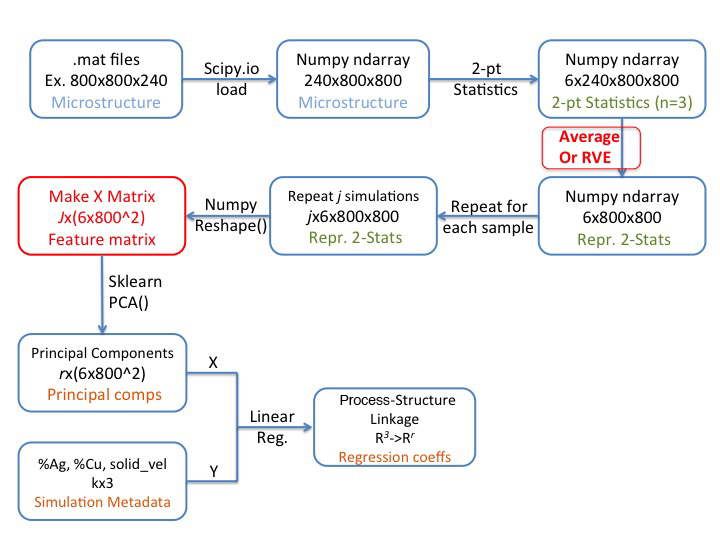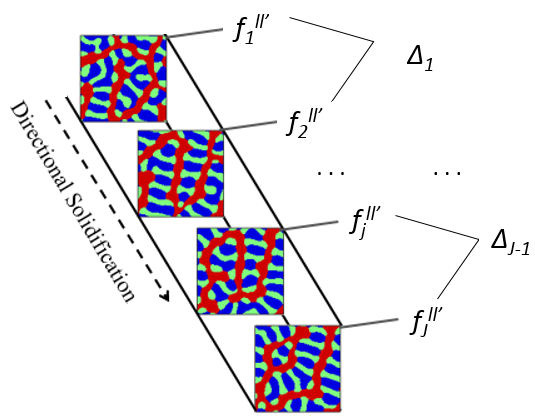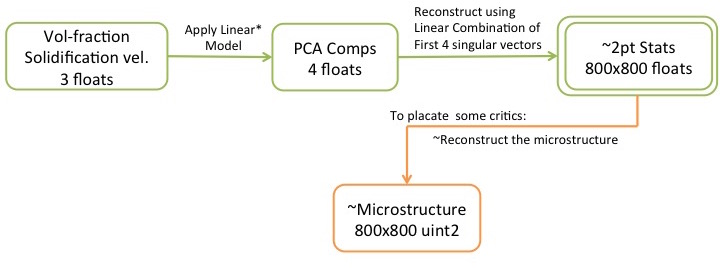Progress Report (Post)
Almambet Iskakov, Robert Pienta
12 00 AM ,Wed, Oct 07 2015
Quick Recap
- Directional Solidification of Al, Ag, Cu Eutectic Alloy
- Made from state-of-the-art simulations
- Multiple solidification velocities and volume-fractions
- Plenty of data, plenty of challenges to overcome

Data: (12x) 800x800x300

We can characterize these points using:
- Two volume fractions (the third is dependent)
- Solidification velocity
Curious Parameters
- We have more than 12 simulations at this resolution
- 2 have solidification velocities around 0.6
- All other experimental velocities are 0.09 or less
-
Is this suspicious?
- Possibly more data in future
Our Workflow

Steps with unanticipated challenges:

2-Points Everywhere
- 3 phases (0 - Al, 1 - Ag-Al, 2 - Al-Cu)
- Assume periodic microstructure (based on simulation)
- Finding a representative microstructure
 * Which microstructure is representative?
* Which microstructure is representative?
Example two-point statistics (autocorrelation)

Steady-State Solidification
Finding representative microstructure (preliminary method)

- Compute the difference between spatial correlations to identify convergence/trends
Comparing autocorrelation

- High initial variation; steady in full simulation result?
- Explore other methods (RVE, etc.)
PCA
Simulated Volumes in PCA-Component-Space
 (grouped by solidification vel.)
(grouped by solidification vel.)
Cumulative Variance by PCA Component
 Encouraging singular-value fall-off characteristics
Encouraging singular-value fall-off characteristics
Linkage Overview
Multivariate regression problem:

Linkage and its application

From a vol-fraction and solidification vel. to “a microstructure”.
Ongoing Work
- We are currently working on cross-validation for our pipeline.
-
Originally wanted k-fold cross validation, but…
-
That’s leave-one-out for ~10 data points.
-
- We have not completed the reconstruction code, but can produce everything up to it.
Challenges
- Representing each volume with a microstructure
- Choosing an RVE
- Doing an expensive 3D 2-pt statistic
- Choosing which correlations to use as PCA inputs
- No control over simulation data